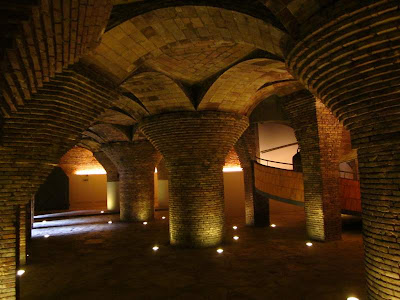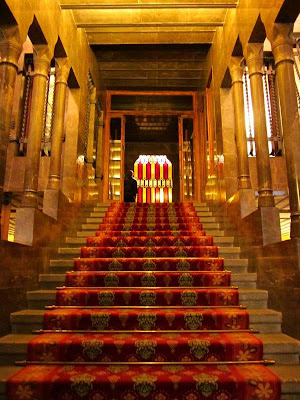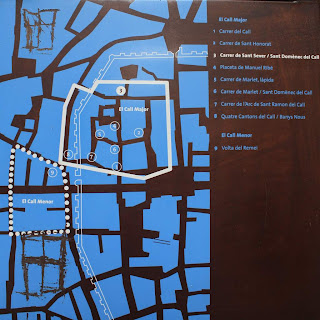After having spoken about El Raval in a previous post, today I would like to give you more information about a beautiful modernist building you could see in that post: El Palau Güell.
Barcelona’s Palau Güell was designed by the young Antoni Gaudí and is a wonderful blend of the architect’s unique exuberant style. The palace, located in El Raval next to La Rambla, was the private residence of Gaudí’s patron, Count Güell.
The wealthy industrialist, landowner and politician Eusebi Güell was Antoni Gaudí’s main patron. In 1885, when the architect was still unknown, Count Güell commissioned him to design his private residence, which would become Barcelona’s Palau Güell in 1890.
Gaudí was aware that Güell wanted to show off his wealth to his friends and acquaintances and he created an unusual, bold architectural project. He made innovative use of traditional building techniques, as well a wide variety of materials, with particular emphasis on more expensive ones such as marble.
In Palau Güell, Gaudí combined the typical square structure of Catalan medieval palazzos and exquisite wooden coffered ceilings with innovations such as the parabolic arch, which became a hallmark of his work
Detail of the parabolic arch, where it can be distinguished the G from Güell
Phoenix rising from the ashes, the symbol of the Catalan Renaissance
Antoni Gaudí didn’t just create a palazzo in Barcelona, he created a metaphor too, as the building rises up, like Güell, from poor beginnings, represented by the austerity of the basement and ground floor, to wealth, as embodied by the riot of colour on the roof
The ground floor, with its simple grey marble, contrasts magically with the interplay of colours and forms of the 20 sculptural chimneys on the roof, which are covered in broken pieces of ceramic tile, marble and stained glass and are the iconic symbols of the Palau Güell
The stables of El Palau Güell, characterised by pillars with mushrooms-shaped capitals
This staircase leads to the mezzanine, a floor used to manage the business affaires of the Güell family. At the end, a stained glass window designed by Gaudí
Parabolic archs in the first floor of the Palau Güell
The ceiling of the central hall in the Palau Güell
A highly decorated wooden ceiling of the first floor
One of the sculptural chimneys on the roof of the Palau Güell
Next I give you some useful Information in case you want to visit El Palau Güell:
- Address: Nou de la Rambla, 3
- Phone: 934 725 775
- How to get there: Metro L3, stop Liceu. Bus 14, 59, 91 and 120.
- Web site: www.palauguell.cat
- Opening time:
- From October to March: from Tuesday to Sunday, from 10am to 5.30pm.
- From April to September: from Tuesday to Sunday, from 10am to 8pm.
- Free entrance the first Sunday of every month, April 23 and May 18.
- Sagrada Familia
- Park Güell
- Casa Vicens
- Casa Milà (also known as La Pedrera)
- Casa Batlló
- Col·legi de les Teresianes
- Casa Calvet
- Torre Bellesguard and Viaduct
- Pabellons Güell
- Cripta de la Colonia Güell
- El Capricho (built in Comillas, a lovely village in Cantabria)
Besides, other modernist buildings you can visit in Barcelona are:
- Palau de la Música Catalana
- La Boqueria
- Casa Fuster
- Casa Terrades or "Casa de les Punxes"
- Casa Thomas
- Casa Amatller
- Casa Lleó i Morera
- Casa Martí (Restaurant els Quatre Gats)
Finally, clicking on the next link you will find more links to other beautiful places in Barcelona.

















